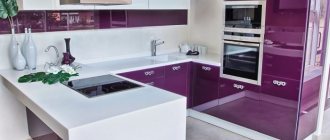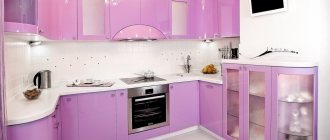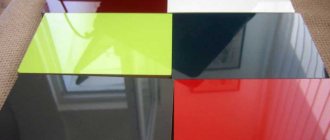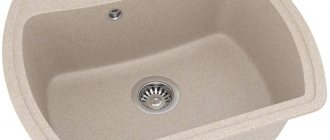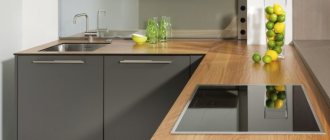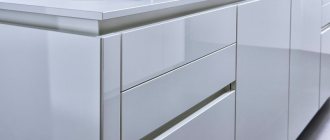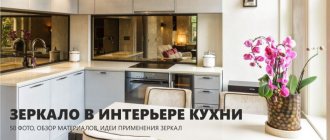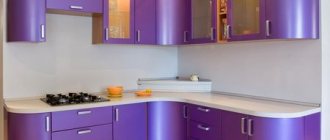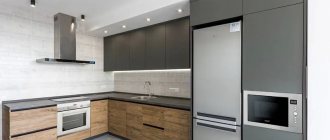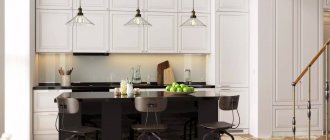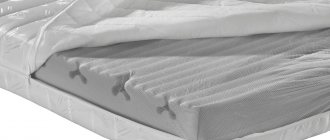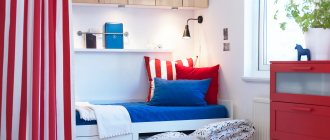The kitchen is the most visited place in the house. And it is important, even at the planning stage, to think about what this room will look like, including the materials used to make the main elements. Today, the most budget-friendly, functional and ergonomic option are plastic kitchen countertops, reviews of which are mostly positive. Let's consider the advantages and disadvantages of plastic directly for the kitchen, as well as the types and features of caring for this material.
What is a plastic tabletop?
The plastic tabletop is an economy class option. This material can be imitated to resemble marble, granite, wood, quartz, and the cost will be six times cheaper than artificial or natural stones.
The basis of tables with a plastic top for the kitchen is chipboard or MDF, which can be of different thicknesses. Chipboard material under high pressure (postforming method) is combined with a thin but durable layer of HPL plastic, which is a decorative option. At the same time, the edges are carefully bent over the edge, and a flat and smooth surface is obtained.
HPL plastic consists of several layers of kraft paper, which are pressed together under high pressure and impregnated with resins. Thus, the material is reliably protected from moisture, mechanical damage and burnout. The quality of the material depends on the manufacturing technology.
About sizes
On the modern market, the majority of plastic countertops are available in two thicknesses: 28 and 38 cm. The second option is almost twice as expensive as thin analogues, but its strength, reliability and durability leave much to be desired.
If you want to get the perfect work surface, pay attention to models made from lightweight chipboard, 60 mm thick. Such countertops are also endowed with increased resistance to moisture.
The width of the slabs is also quite standard - 600 mm. If necessary, you can find products whose width ranges from 300 to 1200 mm.
The length of the slab ranges from 2440 to 4200 mm, depending on the thickness of the countertop. The dimensions should be selected so that there is a minimum number of joints on your work surface.
For linear kitchens, most of them use one solid stove. In any case, corner modifications are composed of several elements.
The aesthetics and durability of the countertop largely depend on the plastic with which the chipboard is covered. It can be 0.4-0.5 (domestic and Polish production) or 0.8 mm (German analogues).
The thicker the layer, the more resistant the countertop will be to high temperatures and traces of coffee, wine and juice.
We advise you to pay attention not to CPL, but to HPL coatings obtained by the postforming method. They are not so scratched, fade minimally, and are characterized by increased strength, although outwardly these modifications are quite similar to each other.
pros
Plastic countertops for the kitchen, photos of which are presented above, have many advantages in addition to their low cost.
The advantages of a plastic kitchen are as follows:
- affordable price - for example, the cost of a domestically produced laminated board measuring 60 x 24.5 cm and 28 mm thick can be purchased for 1,500 rubles, 38 mm thick and 3 m long - 4,000 rubles;
- a variety of colors, textures and decors from classic style to trendy high-tech;
- high-quality material lasts a long time, does not fade and is not subject to mechanical stress;
- the material is not afraid of high temperatures (you can even place hot dishes on it), is easily cleaned of dirt and does not absorb moisture or odor;
- plastic is resistant to chemical treatment.
Additional advantages include the fact that any design or even a photograph can be printed on the plastic surface.
Minuses
Despite the obvious advantages of a plastic-coated countertop, the material also has disadvantages.
Disadvantages of using plastic in the kitchen:
- in appearance this material is inferior to stone and wood, it does not look so natural and organic;
- chipboard material is not durable; under constant exposure to water, the plastic can become deformed and swell;
- the weakest point of such tabletop material is the joints, which should be further processed or seals attached;
- plastic cannot be restored, unlike artificial stone, scratches on which can be easily polished (it is better to use cutting boards on such a surface).
Choice of texture: glossy, matte or textured
Mirror canvases look very stylish. They are perfect for kitchens designed in such modern design styles as high-tech and modern. But in order to maintain the aesthetics of the glossy appearance, you will have to frequently clean the work surface not only from the usual kitchen dirt, but also from soap stains or fingerprints. Matte surfaces have a slight roughness. Dirt is less noticeable on them, especially if you choose a light shade. Modern technologies make it possible to give the laminate various shapes, resulting in countertops with complex volumetric textures. The most popular options are canvases that imitate the grain of stone or the structure of wood. The disadvantage of this design is that it is difficult to clean an uneven surface.
Types of plastic kitchen countertops
The plastic that is used for application to chipboard or MDF can be of two types: High Pressure Laminates (HPL) and Cotinuous Pressed Laminates (CPL). The first option is made under high pressure, during which several layers of paper are compressed; it is of higher quality and more durable. The second type of plastic is processed under low pressure, so its quality indicators are somewhat lower. When choosing, you should take into account the brand of plastic, which may affect the price of the finished product.
Also, plastic countertops can be of two types:
- from ready-made laminated boards of standard sizes of domestic or European production - the country of origin does not matter much here, since both Russian and foreign companies pay close attention to the quality of their products;
- A kitchen table with a plastic top can be made to order - this option will cost more, but you can choose the decor, finish, shade and other elements yourself.
Advantages and disadvantages
When making the canvas, thick chipboard or MDF boards are used as the base. A thin layer of durable laminate (HPL) covers the product from the work surface side and extends to the end edge. The plastic is formed from multi-layer kraft paper, pre-impregnated with resins, then compressed. Laminate and board are bonded together under high temperature and pressure. This method is called postforming. A polymer layer is applied on top of the product to give the tabletop additional strength and resistance to mechanical damage. The base chipboard sheet perfectly withstands moisture, and when cut it has a greenish tint. If MDF is used as the base, then any type of it is considered waterproof.
Advantages of plastic countertops:
- Low price. In this segment, offers from domestic companies are especially profitable.
- There is a very wide range of plastic colors. The material looks aesthetically pleasing and can become an exact copy of products made from natural stone or luxury wood. The surface can also be decorated in the form of a bright ceramic mosaic. Therefore, choosing the right option for the style of the kitchen turns into a real pleasure.
- The surface laminated layer is resistant to most detergents, and therefore it will be easy to maintain cleanliness. The use of chlorine-containing compounds, as well as acids and acetone is excluded. It is not advisable to clean with abrasive agents.
- The intensity of the color of the laminate will remain even with daily long-term exposure to sunlight on the countertop, which often happens in kitchens with windows facing south.
- The material is characterized as relatively resistant to elevated temperatures. The laminate can withstand short-term contact with a surface heated to 180-230 °C. Cups and glasses with hot drinks can be placed directly on the countertop; it is better to place something under a pan with boiling contents.
- Ready-made canvases are easy to install.
Universal material has several disadvantages:
- Resistance to moisture is maintained only if the closed ends and the protective top layer are intact. In areas of unprotected cuts, the product may swell and become deformed, this especially often happens where the sink is installed.
- Wood colors look less believable compared to stone ornaments.
- Open ends of chipboard may release formaldehyde. This disadvantage is less pronounced in class E1 slabs.
- Theoretically, deformation of the material is possible when exposed to high temperatures, for example, near an oven. In such cases, the countertop must be replaced.
- The seams are sealed using metal or plastic overlays. As a result, the joints become visible.
- If a rectangular sheet needs to be given a rounded or beveled shape, then the integrity of the slab is compromised at the cut site, which shortens its service life.
How to choose and install
The Russian market has a fairly wide range of plastic countertops, both domestic and foreign. There are standard sizes of 60 x 224 cm and 62 x 305 cm. If necessary, you can choose the size yourself, which can vary from 2 to 4 m with a thickness of 28-38 mm.
The most budget option is a wood-look plastic kitchen countertop made of CPL (low-pressure plastic) material. Despite the affordable price, the quality indicators are low. It is better to choose HPL plastic. Although it is visually impossible to distinguish one option from another, only a specialist can do this. When choosing, you should pay attention to this most important indicator.
Installing a plastic countertop is not difficult, but for high-quality installation it is better to contact a specialist who will adjust the dimensions to those required for a particular room. To adjust it to size, MDF or chipboard is sawn, but if chips or cracks have formed in place, they cannot be eliminated, so such work should be carried out with special care.
How to install a plastic tabletop yourself?
- All kitchen elements must be level and positioned strictly horizontally. To correct the level, you can use spacers, wedges or legs if they are provided by the manufacturer.
- Markings, which include protrusions on the walls, are applied with a pencil or marker. The gap between the wall should be no more than 5 cm.
- The slab is cut using a jigsaw or hacksaw. For ease of use, a guide bar is used. You can avoid chips and cracks when sawing by using masking tape, which is attached along the line where the cut will be made.
- The cut area is processed with a file. Thus, all irregularities are removed.
- The places of cuts and joints are treated with silicone sealant; if necessary, this is done using metal strips. The distance from the wall is covered with a plastic plinth for kitchen countertops, which is selected according to the color and design of the furniture.
Experts note that the service life of a plastic kitchen depends not only on the material of manufacture, but also on the quality of installation.
Designer tips
Using modern plastic countertops, you can create kitchen work surfaces that are original and non-trivial in design.
Innovative printing technologies make it possible to transfer any designs to the surface, obtaining solutions endowed with strong individuality and originality.
You can easily find quite exotic colors for yourself, but before you decide to take such a step, you must understand that you may soon get tired of such a surface.
Laconic and simple countertops, reminiscent of stone or wood in color and texture, are the most optimal solution. They can easily emphasize the sophistication and originality of a kitchen set without attracting much attention to themselves.
Look for the most universal solution - pay attention to white laminated chipboards. They fit effectively into any interiors and designs and can be combined with different colors and shades.
Countertops in dark colors look very impressive and stylish. Having chosen this option for yourself, you must understand that during use it is difficult to avoid dirt, scratches, and stains, but against such a background they will be more clearly visible.
If you are making a kitchen for yourself seriously and for a long time, please note that the bright shades of even the highest quality plastic will become more faded over time.
The simplest, but most reliable and aesthetic option is tones of gray, beige and brown.
Plastic kitchen design
A plastic kitchen countertop (according to reviews) is the best option, since the range of products is so wide that you can choose the design at your own discretion. Facades made of this material easily fit into any style.
Types of kitchen design made of plastic:
- Modern style. A kitchen with curved and framed facades looks best. It is these non-standard shapes that can fit into a kitchen with an unusual layout. It is best to choose a plastic facade in a chameleon color. It changes color intensity depending on the lighting, the play of colors creates an unusual look for the room.
- Classic. In this design, it is better to give preference to natural materials or a plastic kitchen countertop with a wooden look. There should be no metal inserts or gloss. Curly handles (brass or bronze) will look impressive in such a visit.
- Modern. This style is not simple or cheap. It should combine clarity of form, harmony and grace. The best option would be corner plastic kitchens made of MDF and PVC film.
Gloss or matte
Different HPL plastics can be used to cover chipboard, allowing you to obtain both matte and glossy surfaces.
Matte plastic countertops are slightly rough; their structure resembles the peel of an orange. Glossy – perfectly smooth and shiny.
When choosing a worthy option for yourself, you should pay attention not only to the color, but also to the type of surface.
Gloss will be a worthy option for modern interiors. Its shine will fit perfectly into “high-tech” and minimalist kitchens, emphasizing their belonging to a given style.
They are distinguished by their simplicity in the maintenance process. But you should be prepared for the fact that all traces of food and even fingerprints will be visible on such a surface.
Matte countertops are more practical. Their external design will effectively harmonize with the decor of classic designs.
Today, glossy slabs with a smooth surface and a slight shine are on sale. They are the ones that should be preferred by those who doubt between matte and obvious glossy surfaces.
Features of operation
A plastic tabletop requires special care. Any dirt from its surface is removed with a damp cloth. You can use detergents, but without abrasive particles. You should refrain from using metal sponges or hard brushes, which can scratch the surface. When slicing, you should use a board to avoid scratches from the knife. When scratches occur, moisture penetrates the chipboard layer and causes it to deform or swell.
The weakest point of a plastic kitchen is the joints, which must be treated with sealant. Also important is the plinth, especially at the junction of the tabletop with the apron.
If you place a hot frying pan on a plastic surface, nothing will happen. But with prolonged thermal exposure, the tabletop can still become deformed. Therefore, it is better to use special hot mats.
Installation of chipboard countertops
Chipboard installation includes:
- measurements and cutting;
- edge processing;
- fastening and joining two sheets if necessary;
- sealing and installation of baseboards;
- cut out hole for sink and faucet.
First, measurements are taken and then the sheet is cut based on them. In this case, the length is measured taking into account the strip overlapping the ends. You can cut off the excess from the sheet using a hacksaw or jigsaw. If there are protrusions on the wall, then all the required recesses are cut out on the tabletop in advance.
Reference . The difficulty of installation lies in the careful cutting of the table top. Mechanical damage to the laminated layer leaves unsightly marks. Fastening the tabletop involves installing additional moisture-insulating elements - jumpers, plugs, corners made of aluminum and plastic.
The ends are lubricated with silicone sealant, an aluminum strip is applied and it is leveled flush. Secure the bar with small self-tapping screws and remove excess silicone. The edge of the surface that remains closed is decorated with edge tape.
Fill the rear upper edge of the cabinets with sealant. The back end of the tabletop is also generously lubricated with the same silicone. Plastic or metal corners are attached to the cabinet under the sink.
Important . It is necessary to adjust the height of the legs of the floor cabinets of the kitchen unit using a building level. If the legs are not adjustable, then adjusting wedges and plastic spacers are placed under them.
The countertop slab is carefully placed on the cabinets and either pressed tightly against the wall, or a 5mm gap is left from the wall, leaving a protrusion above the cabinets at the front.
Attach the countertop to the kitchen unit (not to the wall!). To do this, screw 30 mm screws under the countertop into the existing holes (16 mm under the sink). Install the plinth between the apron, table top and on the sides. If a corner fastening of the tabletop is performed, then the joint seam is hidden with an aluminum profile.
Important ! In custom kitchens, the work surface is common to all lower cabinets. If you are assembling a kitchen set from factory-assembled modules, then most likely you will need to connect all the countertops. All the necessary cuts are made in the plane, after which the connecting elements are inserted into the grooves and firmly pulled together. At the last stage, a hole for the sink is cut out.
How to properly replace a countertop
If we are talking about replacing the surface on an already installed headset, proceed as follows:
- the old surface is dismantled without damaging the kitchen unit - the sink and baseboard are removed and all fasteners are removed;
- the new surface must be adjusted to the wall and to the existing dimensions of the furniture;
- the height is controlled especially carefully, since it is important that the structure rests evenly on existing pieces of furniture;
- the resulting edges on the chipboard surface must be sealed, otherwise moisture getting inside will lead to swelling and destruction of the structure;
- fastening the tabletop also involves connecting several elements into one so that their height along the wall is the same, and there are no gaps between the elements.
The tabletop must be fixed to each of the lower cabinets with screws through stiffeners or corners. The screw pitch is at least 50 cm. All cut and sawn ends of the chipboard that are not covered with a protective film, including holes for built-in appliances and sinks, must be thoroughly coated with silicone sealant.
Important . The chipboard tabletop should be supported along its entire length; no parts of it should “hang in the air.” The supports are the walls of the cabinets and the stiffeners located between them. A gap in support at the locations of built-in appliances (for example, a dishwasher) up to 60 cm in length is allowed.
You can securely screw a screw into a chipboard board only once; it will not hold properly again. If you fail to do this the first time, it is better to change the mounting location or pour a couple of drops of epoxy glue into the hole. It is better to make holes for built-in appliances in the countertop directly at the assembly site.
If a product is ordered from a manufacturer with a ready-made hole, it should be transported especially carefully; the tabletop may simply break. Connecting slabs in a corner kitchen should only be done using special screw ties; this is the only reliable way to fix them.
Plastic countertop for the kitchen: reviews
A plastic kitchen is presented in reviews as a budget-friendly and quite successful option for the home. Users note not only its low cost, but also its convenience and ease of installation, and a fairly long service life with proper use. Its low sensitivity to mechanical damage and heat resistance were also noted. But still, users advise not to use the tabletop as a hot plate or cutting board, since if scratches form, the surface cannot be restored.
In general, reviews of plastic kitchen countertops are positive, but there are also negative reviews. Some users noted that the surface becomes deformed after a short time, and there are places where the tabletop has swollen. This is most likely due to improper operation, as well as the choice of the cheapest CPL brand plastic. It is an inexpensive, but also short-lived material. It is better to give preference to HPL.
Kitchen restoration
Any furniture store will convince you that a kitchen with plastic facades cannot be restored. However, minor damage can be repaired at home.
- If your furniture has a dent, you will need a plastic primer to fix the damage.
- It can be bought at any construction or furniture store. Apply primer to the defect and putty. Then you can paint.
- There is no need to panic if the plastic covering comes off. Take super glue and glue it.
- The color has faded and the kitchen is no longer as beautiful as it was before? There is a solution, or to be more precise, 2 - paint it or order a new film.
In the first and second cases, the surface needs to be degreased and only then proceed with decoration.
